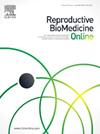Does HCG and LH supplementation during ovarian stimulation improve clinical outcome? A evaluation of 30 years of clinical research
IF 3.7
2区 医学
Q1 OBSTETRICS & GYNECOLOGY
引用次数: 0
Abstract
This review evaluates the effect of HCG and LH supplementation during ovarian stimulation. Controlled trials were divided into four groups comparing the treatment effect of recombinant FSH (r-FSH) with urinary FSH (u-FSH), with human menopausal gonadotrophin (HMG), with r-FSH + recombinant LH (r-LH) and with rFSH + recombinant HCG (r-HCG). First r-FSH seemed to be more potent than u-FSH in downregulated women, which translated into more follicles and oocytes. In line, numerous trials comparing HMG (containing u-FSH + u-HCG) with r-FSH demonstrated that HMG recruited fewer follicles, thus providing fewer oocytes but resulted in slightly higher pregnancy rates after a first fresh embryo transfer. The latter may be explained by the higher potency of r-FSH resulting in more and higher premature progesterone rises. Prospective trials addressing r-FSH + r-LH compared with r-FSH could not demonstrate any difference in pregnancy rates in normal or poor responders. A placebo-controlled trial of r-HCG added to a fixed daily r-FSH dose revealed that r-HCG inhibited the growth of intermediate follicles, resulting in fewer oocytes, fewer embryos and lower pregnancy rates. In conclusion, the beneficial effect of HCG and LH supplementation on clinical outcome has never been definitely proven for any of the combined gonadotrophin products.
卵巢刺激期间补充 HCG 和 LH 是否能改善临床结果?对 30 年临床研究的评估
本综述评估了促卵巢过程中补充HCG和LH的效果。对照试验分为四组,比较重组FSH (r-FSH)与尿FSH (u-FSH)、与人绝经期促性腺激素(HMG)、重组FSH + 重组LH (r-LH)和重组FSH + 重组HCG (r-HCG)的治疗效果。首先,在激素水平下调的女性中,r-FSH似乎比u-FSH更有效,这转化为更多的卵泡和卵母细胞。因此,许多比较HMG(含有u-FSH + u-HCG)与r-FSH的试验表明,HMG募集的卵泡较少,因此提供的卵母细胞较少,但在第一次新鲜胚胎移植后妊娠率略高。后者可以解释为更高效力的r-FSH导致更多和更高的早孕激素升高。针对r-FSH + 与r-FSH比较的前瞻性试验无法证明正常或不良应答者的妊娠率有任何差异。一项将r-HCG添加到每日固定剂量的r-FSH的安慰剂对照试验显示,r-HCG抑制了中间卵泡的生长,导致卵母细胞减少,胚胎减少,怀孕率降低。总之,补充HCG和LH对临床结果的有益影响从未被明确证明用于任何联合促性腺激素产品。
本文章由计算机程序翻译,如有差异,请以英文原文为准。
求助全文
约1分钟内获得全文
求助全文
来源期刊

Reproductive biomedicine online
医学-妇产科学
CiteScore
7.20
自引率
7.50%
发文量
391
审稿时长
50 days
期刊介绍:
Reproductive BioMedicine Online covers the formation, growth and differentiation of the human embryo. It is intended to bring to public attention new research on biological and clinical research on human reproduction and the human embryo including relevant studies on animals. It is published by a group of scientists and clinicians working in these fields of study. Its audience comprises researchers, clinicians, practitioners, academics and patients.
Context:
The period of human embryonic growth covered is between the formation of the primordial germ cells in the fetus until mid-pregnancy. High quality research on lower animals is included if it helps to clarify the human situation. Studies progressing to birth and later are published if they have a direct bearing on events in the earlier stages of pregnancy.
 求助内容:
求助内容: 应助结果提醒方式:
应助结果提醒方式:


